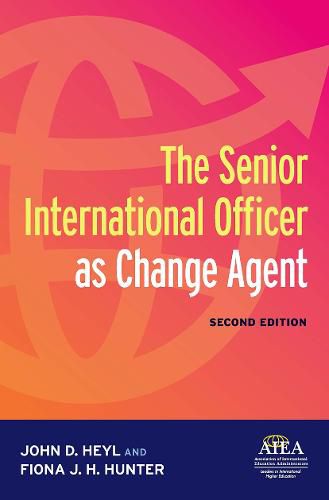Readings Newsletter
Become a Readings Member to make your shopping experience even easier.
Sign in or sign up for free!
You’re not far away from qualifying for FREE standard shipping within Australia
You’ve qualified for FREE standard shipping within Australia
The cart is loading…






This new edition reflects the dramatic changes that have taken place across the world in higher education in the decade since the first was published, and addresses how they specifically impact international education and inform the role of senior international officer (SIO) today.
Declining public investment in higher education and a negative political climate have increasingly led to the commercialization of international education activities and the expectation they should pay for themselves by levying fees or seeking outside funding.
In addition, today’s international education leadership faces several contradictory realities. While inexorable trends in globalization continue to stimulate higher levels of participation in international study and exchange, its impacts - such as increased migration, global terrorism and the populist resistance they have provoked - are shifting institutional priorities from those of greater openness and global understanding to those of profitability and security.
Facing these issues and the global competition for student talent at a time of declining enrollments; the impacts of technology; the increasing diversity on campus; pressures to partner across borders; changing emphases in institutional mission; and the expectations of both parents and students in gaining a global perspective during university studies, it’s clear that the key issue facing SIOs is managing change as colleges and universities seek to strengthen, professionalize, and centralize – or in some cases decentralize - their international offices.
$9.00 standard shipping within Australia
FREE standard shipping within Australia for orders over $100.00
Express & International shipping calculated at checkout
This new edition reflects the dramatic changes that have taken place across the world in higher education in the decade since the first was published, and addresses how they specifically impact international education and inform the role of senior international officer (SIO) today.
Declining public investment in higher education and a negative political climate have increasingly led to the commercialization of international education activities and the expectation they should pay for themselves by levying fees or seeking outside funding.
In addition, today’s international education leadership faces several contradictory realities. While inexorable trends in globalization continue to stimulate higher levels of participation in international study and exchange, its impacts - such as increased migration, global terrorism and the populist resistance they have provoked - are shifting institutional priorities from those of greater openness and global understanding to those of profitability and security.
Facing these issues and the global competition for student talent at a time of declining enrollments; the impacts of technology; the increasing diversity on campus; pressures to partner across borders; changing emphases in institutional mission; and the expectations of both parents and students in gaining a global perspective during university studies, it’s clear that the key issue facing SIOs is managing change as colleges and universities seek to strengthen, professionalize, and centralize – or in some cases decentralize - their international offices.